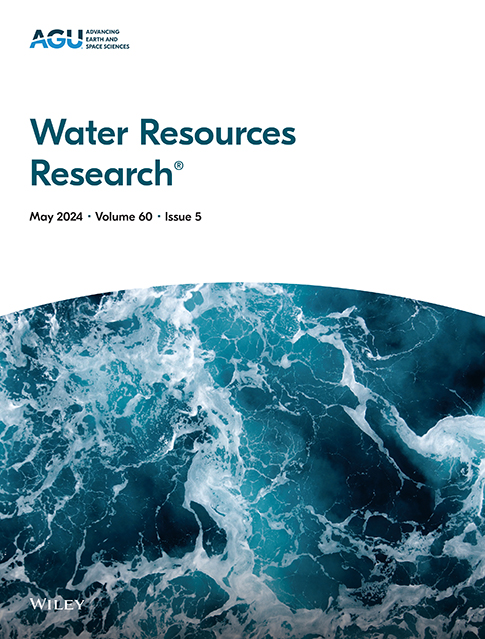全球河流拓扑(GRIT):一个分岔河流水文
IF 4.6
1区 地球科学
Q2 ENVIRONMENTAL SCIENCES
引用次数: 0
摘要
现有的全球河流网络支撑着广泛的水文应用,但并不代表具有不同河流流量的渠道(分叉、多线程渠道、运河),因为这些特征违背了高程衍生网络(例如,HydroSHEDS, MERIT Hydro)所基于的汇合流假设。然而,分岔是全球河流排水系统的重要特征,特别是在大型洪泛平原和河流三角洲,而且经常在人口稠密的地区发现。在这里,我们开发了第一个基于栅格和矢量的全球河流拓扑,它不仅代表了全球排水网络的支流,还代表了分布,包括多线程河流,运河和三角洲。我们通过将30米的基于landsat的河流掩膜与高程生成的河流合并来实现这一目标,以确保小于30米的河流在河流掩膜外具有均匀的排水密度。至关重要的是,我们采用了基于TanDEM-X的新的30米数字地形模型FABDEM,该模型比传统的SRTM导数具有更高的精度。矢量化和剪枝后,通过一系列的高程、流角和连续性方法来确定方向性。新的全球网络及其属性通过测量站、与现有网络的比较以及随机人工检查进行验证。新的管网包括1960万公里的流域面积大于50平方公里的溪流和河流,包括67,495个分叉。随着超分辨率建模和人工智能的出现,GRIT有望大大提高许多基于河流的应用的准确性,如洪水预报,水的可用性和质量模拟,或河流栖息地测绘。本文章由计算机程序翻译,如有差异,请以英文原文为准。
Global River Topology (GRIT): A Bifurcating River Hydrography
Existing global river networks underpin a wide range of hydrological applications but do not represent channels with divergent river flows (bifurcations, multi-threaded channels, canals), as these features defy the convergent flow assumption that elevation-derived networks (e.g., HydroSHEDS, MERIT Hydro) are based on. Yet, bifurcations are important features of the global river drainage system, especially on large floodplains and river deltas, and are also often found in densely populated regions. Here we developed the first raster and vector-based Global RIver Topology that not only represents the tributaries of the global drainage network but also the distributaries, including multi-threaded rivers, canals and deltas. We achieve this by merging a 30 m Landsat-based river mask with elevation-generated streams to ensure a homogeneous drainage density outside of the river mask for rivers narrower than approximately 30 m. Crucially, we employ the new 30 m digital terrain model, FABDEM, based on TanDEM-X, which shows greater accuracy over the traditionally used SRTM derivatives. After vectorization and pruning, directionality is assigned by a series of elevation, flow angle and continuity approaches. The new global network and its attributes are validated using gauging stations, comparison with existing networks, and randomized manual checks. The new network represents 19.6 million km of streams and rivers with drainage areas greater than 50 km2 and includes 67,495 bifurcations. With the advent of hyper-resolution modeling and artificial intelligence, GRIT is expected to greatly improve the accuracy of many river-based applications such as flood forecasting, water availability and quality simulations, or riverine habitat mapping.
求助全文
通过发布文献求助,成功后即可免费获取论文全文。
去求助
来源期刊

Water Resources Research
环境科学-湖沼学
CiteScore
8.80
自引率
13.00%
发文量
599
审稿时长
3.5 months
期刊介绍:
Water Resources Research (WRR) is an interdisciplinary journal that focuses on hydrology and water resources. It publishes original research in the natural and social sciences of water. It emphasizes the role of water in the Earth system, including physical, chemical, biological, and ecological processes in water resources research and management, including social, policy, and public health implications. It encompasses observational, experimental, theoretical, analytical, numerical, and data-driven approaches that advance the science of water and its management. Submissions are evaluated for their novelty, accuracy, significance, and broader implications of the findings.
 求助内容:
求助内容: 应助结果提醒方式:
应助结果提醒方式:


